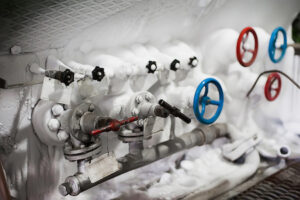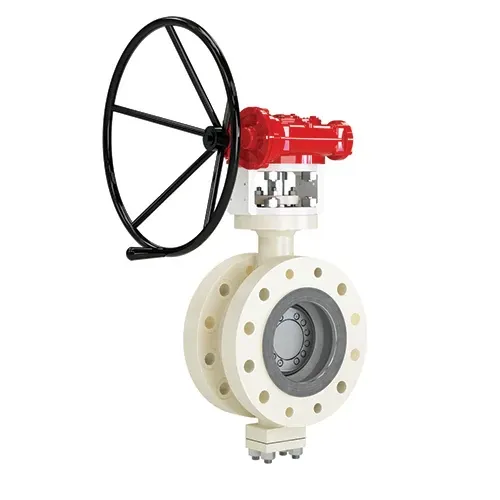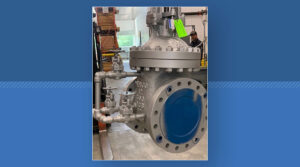
Cryogenic Valves – Uses, Types, Standards, and Testing
Cryogenic valves can withstand and operate effectively at extremely cold temperatures. They serve in a variety of fields including the petrochemical and aerospace industry, where there is a need to handle fluids at such temperature levels. Although the definition of cryogenic temperature varies according to industry, it is common to see cryogenic valves operate between -40℉ (-40℃) to values below -320℉ (-196℃). In this article, we will review the common uses of cryogenic valves, types, standards, and testing.
Uses of Cryogenic Valves
Cryogenic valves are mostly found in industrial facilities to harness the benefits of undergoing processes at cryogenic temperatures. Thus, the following sections highlight some of these applications.
Liquid Nitrogen Gas (LNG) Terminals and Plants
In the oil and gas industry, cryogenic valves serve in the control of liquified gasses such as liquid nitrogen, methane, and helium. Because of the ease and safety of non-pressurized storage and transport, these elements cool to cryogenic temperatures, so they remain in the liquid state. As a result, larger volumes can be transported or stored for some time, while the piping system operates at much lower pressure levels. Before cooling these gasses into liquid, it is necessary to remove condensate, moisture, CO2, and H2S to prevent corrosion problems downstream.

Cryogenic Processing
From World War II, the field of cryogenics enjoyed accelerated development with its eventual commercialization in 1966 by Ed Busch. Busch increased metal tool design life by up to two to four times via cryogenic tempering rather than heat treatment. As a result, it is common to find cryogenic valves and accompanying equipment in steel production plants today. Another area of use is in the freezing of foods and biotech products such as vaccines.
Aerospace Applications
In the aerospace industry, cryogenic fuels have gained wide acceptance over the years. Liquid hydrogen and liquid oxygen often serve as propellants for space shuttles, either alone or in combination with jet fuel. The presence of cryogenic valves is a must in such systems.
Types of Cryogenic Valves
As previous sections highlight, there are a variety of cryogenic applications. Similarly, there are a variety of valve types that can serve in these applications, with each having its own benefits. Thus, it is necessary to select the right type that suits an application. Generally, a basic feature of all cryogenic valves is having a tight shut-off. Cryogenic fluids are sensitive, and any leakage can cause harmful and expensive damage.
Cryogenic Butterfly Valves
The triple-offset butterfly valve is an ideal option for cryogenic service. This is due to its non-friction, metal-to-metal seal that provides bubble-tight shut-off and the long-term integrity of the sealing mechanism. Additionally, they offer quick opening and closing action and are the ideal choice for remote operation. The Durco TX3 butterfly valve provides such an example – with excellent shutoff capabilities, low torque, and reduced wear benefit.

Cryogenic Globe Valves
These valves have a spherical shape with a disc that rotates 90° to the plane of its body seat. Therefore, it provides effectiveness for long-term sealing. However, they may not resist erosion for long and are not recommended for systems with high flow rates. Ideally, globes should be provided with a full Stellite valve trim to protect against erosion. Cryogenic fluids tend to lose their lubricity, and the Stellite helps to reduce the wear and tear on the valve.
Cryogenic Ball Valves
The most common valves for liquid gas applications are the double-seal ball valves such as the L&T and AMPO Poyam. Generally, they offer better flow characteristics than globe valves. Also, they are very efficient in providing a tight seal. They also incorporate a vapor space of sufficient height that allows gasification in the area below the gland. Consequently, this keeps the gland packing near the ambient temperature as thermal conductivity between the inside and outside of the valve is limited. Yet, due to wear concerns along the seals and the ball, they find preference in applications with an unrestricted flow path.
Cryogenic Gate Valves
A typical cryogenic gate valve has a wedge-shaped gate, which opens and closes in line with the mating body seat. As a result, there is minimal pressure drop when in a fully open position. Thus, it provides desirable flow characteristics. For larger valve sizes, gate valves such as the Poyam, L&T, and the smaller forged NEWCO are preferred in place of ball valves, which can be more costly. However, gates are more difficult and expensive to actuate in comparison to butterfly valves, especially as their size increases, so they are not ideal for remote operation. Gates can be prone to wear and tear if they are subject to often repeated opening and closings. An advantage gate valves have is that due to the metal-to-metal sealing surfaces, they are not subject to the cold flow that Teflon seals in ball valves tend to see.
Ideally, gate valves should be provided with a Full Stellite Trim (Stellite on both the seat and the disc) to protect against erosion. Cryogenic fluids tend to lose their lubricity and the Stellite helps to reduce the wear and tear on the valve.
Standards
Although some companies have specific requirements for cryogenic valve service, most of these requirements stem from engineering standards such as MSS SP-134, BS 6364, ASME 16.34, and ISO 21011.
MSS SP-134
The MSS SP-134 is the dominant code in use within North America. It covers requirements for material, design, dimensions, fabrication, pressure testing, and non-destructive examination of cryogenic valves with body/bonnet extensions. Below is a summary of the recommendations of this design code:
- Materials: Every material in contact with the cryogenic fluid should exhibit suitable mechanical properties at the minimum temperature specified in the purchase order. Table A1 of ASME B31.3 provides a list of these properties. In addition, Table 1 of ASME B16.34 states the acceptable materials for the body, bonnet, body/bonnet extension, and pressure retaining bolts. Whenever pipe or non-standard wall tube material makes up the body/bonnet extensions, the material should be seamless.
- Design: For the valve design, SP-134 requires the body/bonnet extension to sufficiently isolate the stem packing and valve operating mechanism from the temperature effects of the cryogenic fluid. Also, the wall thickness of the extension should be sufficient to withstand the bending stresses from operating the valve and the pressure stresses. The use of this body/bonnet extension is necessary for operating temperatures below -100°F (-73°C). And the valves having extension should be able to operate with a stem orientation between 15° and 90° above the horizontal plane. The stems must be a one piece design as there is no stem welding allowed. Gate valves must come with an internal venting to prevent trapped fluids within the bonnet cavity from expanding and over pressurizing the valve. (A 1°F rise in temperature can cause up to a 100 psi increase in pressure in a trapped area.)
- Fabrication: SP-134 recommends all valve welds occur in line with Section 2.1.6 of ASME B16.34. Further, all welders are to be qualified using the provisions of Division 1, Section VIII, ASME Boiler and Pressure Vessel Code. Non-destructive examination of the welds should also be in accordance with this Pressure Vessel Code, to meet the requirements of ASME B16.34.
- Production Pressure Testing: Before any testing is carried out, the valve should be cleaned and degreased in line with the purchase order requirements. Also, each valve testing should follow the specifications from the purchase order, as well as those from ASME B16.34 for shell and closure testing. Finally, the valve should be dried of all water trapped during the testing.
BS 6364
This British Standard specifies requirements for the design, manufacture, and testing of valves for cryogenic service. A summary of its requirements is as follows:
- Cryogenic valves shall be manufactured with extended bonnets/glands. In addition, the length of the extension shall be enough to maintain the stem packing at a high enough temperature. Hence, permitting its operation within the normal temperature range of the packing material.
- Valves in liquid service shall be capable of operating with their stem at or above 45° higher than its horizontal position. Similarly, valves in gas service should be able to operate with their stem at or above the horizontal position.
- However, for cold box applications, the requirement is operation with the valve stem at or above 15°.
- The design of valves should include pressure relief if there is a rise above the normal working pressure. Because cryogenic systems are prone to build up in cavities due to thermal expansion or evaporation of liquid.
- BS 6364 prohibits the use of flat-seated discs for globe valves. Rather, they should be conical or tapered.
- For flammable service, valve design shall ensure electrical continuity to prevent the buildup of static electricity.
- BS 6364 also contains procedures for valve prototype testing and production testing.
ASME 16.34
The ASME 16.34 contains important specifications covering parts relating to the valve such as flange, threading, and welding end. A few of the details include:
- Valve pressure testing requirements for shell tests, valve closure tests, and leakage detection devices
- Material selection requirements, flange removal, and electrical continuity
- Description of nominal pipe size and pipe marking specifications
ISO 21011
This international standard outlines requirements for the design, manufacture, and testing of valves for the operation of cryogenic fluids. In addition, the specifications cover operation at temperatures from ambient to cryogenic. A summary of its recommendations is as follows:
- Materials: This standard recommends that both metallic and non-metallic materials for valve parts should meet requirements according to ISO 21028-1 and ISO 21028-2 respectively. Also, these requirements should be as appropriate for the rated minimum temperature. Moreover, metallic materials that do not exhibit ductile/brittle transition shall notundergo additional impact tests. Similarly, this exemption extends to valve components if the rated minimum temperature is higher than the ductile/brittle transition range temperatures of their material. As for non-metallic materials, they should be limited to packing glands and insertions in the plug/stem assembly that provide leak tightness. These non-metallic materials shall be resistant to sunlight, aging, and weather. For all materials in use, engineers shall ensure they do not become inoperable due to the accumulation of valve corrosion. Finally, the compatibility of materials with products requires evaluation. For example, metallic materials shall contain less than 70% copper if used with acetylene mixtures.
- Design: Generally, cryogenic valves must perform their function in a safe manner within a temperature range from their rated minimum temperature up to 65℃. They must also operate within a given pressure spectrum. Furthermore, the minimum wall thickness for valve bodies shall follow specifications in ISO 17292, ISO 10434, ISO 15761, and ASME 16.34. For the valve stem, its length shall be sufficient to maintain the packing at a temperature within the normal range for the packing material. This occurs via provision of an extended stem or bonnet. The ISO 21011 forbids the presence of cavities where trapping of liquid and build up of pressure may occur.
Other Standards
There are a host of other standards that are useful when dealing with cryogenic valves. Some of these standards and areas of coverage include:
- ISO 5208: Pressure testing of cryogenic valves
- ISO 10434: Bolted bonnet steel gate cryogenic valves for the petroleum, petrochemical and allied industries
- ISO 11114-1: Compatibility of transportable gas cylinders and metallic valve materials with gas contents
- ISO 11114-2: Compatibility of transportable gas cylinders and non-metallic valve materials with gas contents
- ISO 15761: Steel gate, globe, and check valves for sizes DN 100 and smaller, for the petroleum and natural gas industries
- ISO 17292: Metal ball valves for petroleum, petrochemical, and allied industries
- ISO 21010: Cryogenic vessels and gas/materials compatibility
- ISO 21028-1 and ISO 21028-2: Toughness requirements for materials at cryogenic temperature range
- ISO 23208: Cleanliness of vessels for cryogenic service
Cryogenic Valves Testing
Like every other type of valve, cryogenic valves are subjected to valve testing, according to the type of valve in use. Nevertheless, some of the tests which are always a requirement include:
- Shell Strength Test: This could be hydrostatic or pneumatic depending on the system’s working pressure and other characteristics. Guidelines require it to be done to a level of 1.5 times the maximum working pressure of the system.
- Shell and Seat Leak Test: For pneumatic tests, the system is pressurized to 1.1 times the maximum working pressure. While for hydrostatic tests, the level is 1.3 times the maximum working pressure.
- Cryogenic Prototype and Production Test: These tests are performed in accordance with the procedure from BS 6364.


